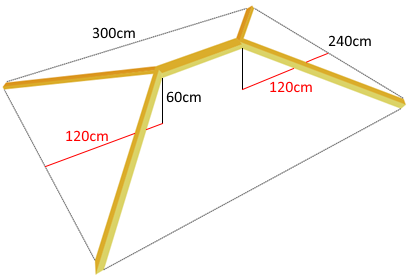Or search by topic
Number and algebra
Geometry and measure
Probability and statistics
Working mathematically
Advanced mathematics
For younger learners
Garden Shed



- Problem
- Student Solutions

Each of the four sloping beams is the same length.
The roof of the shed is 300cm long, 240cm wide and 60cm high.
What is the total length of wood needed to make these five main beams for the roof?
Can you reduce the amount of wood needed by changing the lengths marked in red?
With thanks to Don Steward, whose ideas formed the basis of this problem.
You may also like
The Old Goats
A rectangular field has two posts with a ring on top of each post. There are two quarrelsome goats and plenty of ropes which you can tie to their collars. How can you secure them so they can't fight each other but can reach every corner of the field?
Isosceles
Prove that a triangle with sides of length 5, 5 and 6 has the same area as a triangle with sides of length 5, 5 and 8. Find other pairs of non-congruent isosceles triangles which have equal areas.

